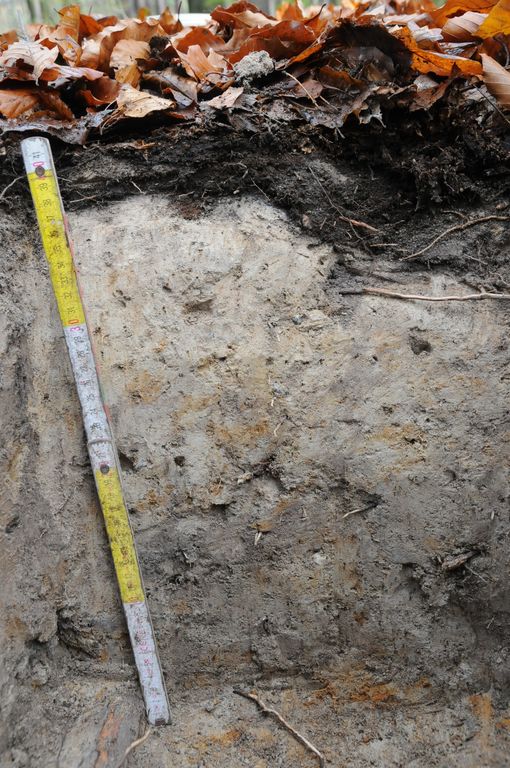Soil Carbon
Terrestrial ecosystems, particularly forests, store large amounts of carbon in soils and biomass, hence they are an essential part in the cycle of greenhouse gases like carbon dioxide (CO2) and methane (CH4). One third of the earths` surface is covered by forests, which means that 359 billion tons carbon is stored in the biomass and 787 billion tons carbon is stored in the soil (IPCC, 2001). Approximately 2.5 billion tons of carbon is stored in German forests, with more than half of this located in the forest soils. That amount of carbon corresponds to one 10th amount of the annual German CO2 emissions from fossil fuel combustions. Therefore, soils, as the transition zone between atmosphere, biosphere and lithosphere, represent one of the most important sinks for organic carbon.
In the evaluation of the second national soil inventory (BZE II) we want to describe the contribution of forest ecosystems to the soil carbon sequestration. Furthermore, we focus on how stored carbon responds to changing environmental conditions (e.g., climate change, influence of pollutants, silvicultural management). Human activities have had a lasting effect (for centuries) on the global carbon cycle. The exploitation of forests, deforestation or natural hazards cause a release of formerly sequestered carbon. Also an increase of the mean annual temperature or changes in the water regime leads to an additional release of carbon from soil.
Data about the carbon stored in forest soils are necessary to fulfil the corresponding obligation to report in the context of the United Nations Framework Convention on Climate Change. The monitoring of changes in soil carbon stocks is a topical challenge due to the current requirements to report the carbon balance of forests against the background of the Kyoto Protocol. Thus, our investigations at present consider one of the most important topics in forest soil research. To balance the carbon cycle it is a prerequisite, however, that processes of carbon sequestration and the rate of carbon release are well understood. Only in this way can suitable arrangements be implemented to enhance forest soils as a sink for organic carbon or reduce CO2 emissions from forest soils. Reliable regional predictions of soil organic carbon pools can only be estimated by datasets of national inventories like BZE II.

![[Translate to English:] [Translate to English:]](/media/_processed_/9/2/csm_Allgemein_Thueringen_Hainich_Mischwald_Bolte_2__19d9dab56a.jpg)
![[Translate to English:] [Translate to English:]](/media/_processed_/d/2/csm_100_0001_0013_c05c63e7db.jpg)






